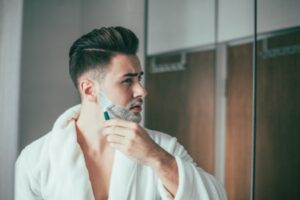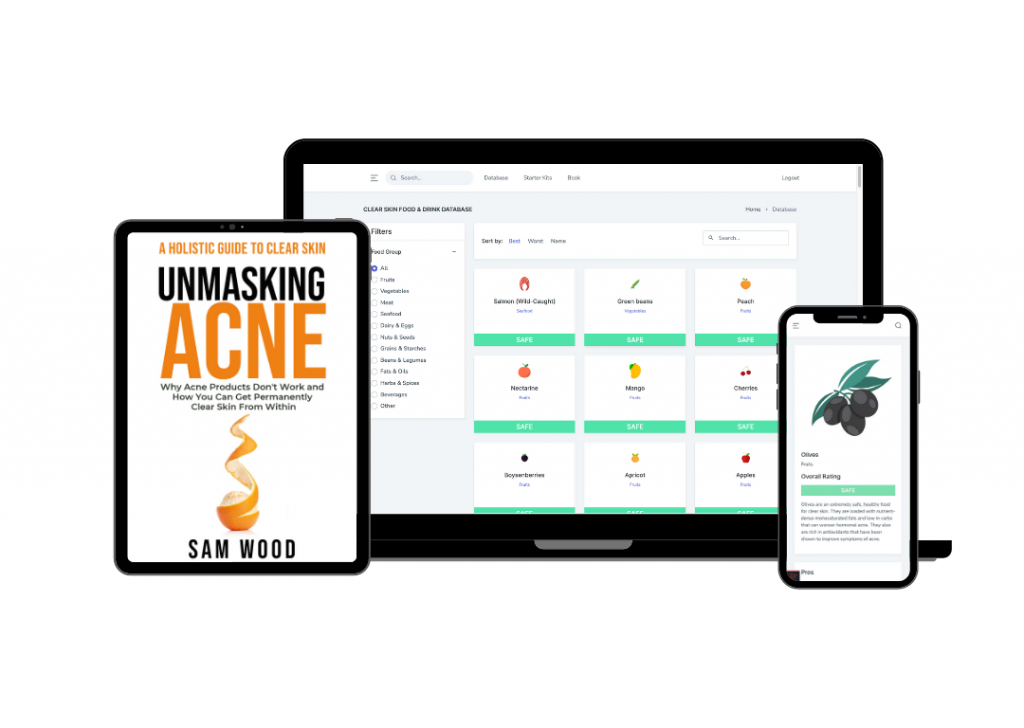One of the many great things about shaving is that it leaves your skin feeling very soft and smooth. One downside to this, however, is acne.
Acne can be caused by various factors, including over-exfoliation, excessive drying from chemicals or waxing, or even hormonal changes due to puberty or pregnancy.
Whatever the reason for your breakouts, there are some simple ways you can prevent them after shaving!
Preventing Acne After Shaving – 6 Steps To Take Action
1: Use a Shaving Cream With Glycerin
To start, you should use a shaving cream that contains glycerin. Glycerin is an ingredient that will help soften hair and skin, making it easier to shave off the hairs and their roots.
However, it is also important to note that not all types of shaving creams can be used on your face because they may contain ingredients like menthol or eucalyptus oil.
These oils are added for flavor, but too much can dry out your skin, causing more acne problems in the long run!
2: Shave In The Direction Of Hair Growth, Not Against It
One mistake that guys make when shaving is that they shave against the direction of hair growth. This not only damages your skin but can lead to ingrown hairs and acne.
If you want a closer shave, use shorter strokes with the razor while going the same direction as your hair grows.
For example, if you are shaving your face, shave downward with the grain first. Then re-lather and go against or across the grain if any stubble is left over. Using a high-quality acne-safe razor will significantly help reduce post-shaving bumps.
3: Rinse Your Face With Cold Water After Every Shave
Excessive moisture can cause the skin to become itchy and sweaty, which is a perfect environment for acne.
Coldwater will help reduce swelling as well as tighten up your pores after you are done shaving. Not to mention that cold water feels great on your skin after shaving.
If you are not in the mood for a cold shower, just run your face under some cold water while you shave. Then, rinse off with warm or hot water when you are finished shaving to close the pores and pat dry.
4: Apply An Acne Treatment Like Benzoyl Peroxide or Salicylic Acid
Both benzoyl peroxide and salicylic acid are used to treat acne. Benzoyl peroxide is a common over-the-counter treatment that kills the bacteria associated with acne while stimulating new skin growth, which helps prevent breakouts.
Salicylic acid has similar benefits but works by removing dead cells on top of your skin (exfoliation), which prevents clogged pores; it is especially helpful for reducing blackheads.
5: Wear Loose-Fitting Clothes
Wear loose-fitting clothes that do not rub up against your shaved area while you are sweating for reduced irritation and breakouts. They also help your skin breathe and will make you feel more comfortable.
Loose-fitting clothing can be a bit of an inconvenience, but it is better than having to deal with the aftermath of shaving rash or acne outbreaks!
To add to this, make sure you do not wear makeup on your shaved areas, as it will only cause more irritation and breakouts.
6: Keep Your Hands Out of Your Face
Make sure that you keep your hands away from your face. This will help avoid getting bacteria on the pores of your skin or hair follicles, which can then cause acne breakouts.
If you do get a pimple after shaving, try applying an ice cube directly onto it for 15 minutes, which should reduce any inflammation present in the area.
If possible, use fresh lemon juice with water as a toner several times per day for two days following any irritation caused by razor burn or ingrown hairs.
Takeaway
All men that are able to grow facial hair are statistically more likely to have acne breakouts. Regardless of whether you shave every day or once a month you need a skincare routine that keeps your skin hydrated without causing oil building.
Always use a fresh razor and shaving cream/gel when you shave. Cleanse your face with an acne wash or exfoliate before shaving to remove excess dirt and oil that can clog pores.
Shave in the direction of hair growth using short, light strokes while avoiding pressure on your skin which irritates. Follow-up by immediately cleansing the shaved areas with gentle products – never use soap as it is too harsh for sensitive skin.
Frequently Asked Questions
Yes, aftershave can cause acne. However, the ingredients in aftershave are often the same as those found in most anti-acne products sold over the counter at drug stores or supermarkets.
Aftershave is a product that is usually applied to the face after one is done shaving their face. The aftershave usually has a delightful smell but can irritate acne.
People who suffer from shaving bumps should know that their condition can be uncomfortable and embarrassing. That is why it is essential to understand what causes the problem in the first place so you will know how to treat your skin after shaving.

